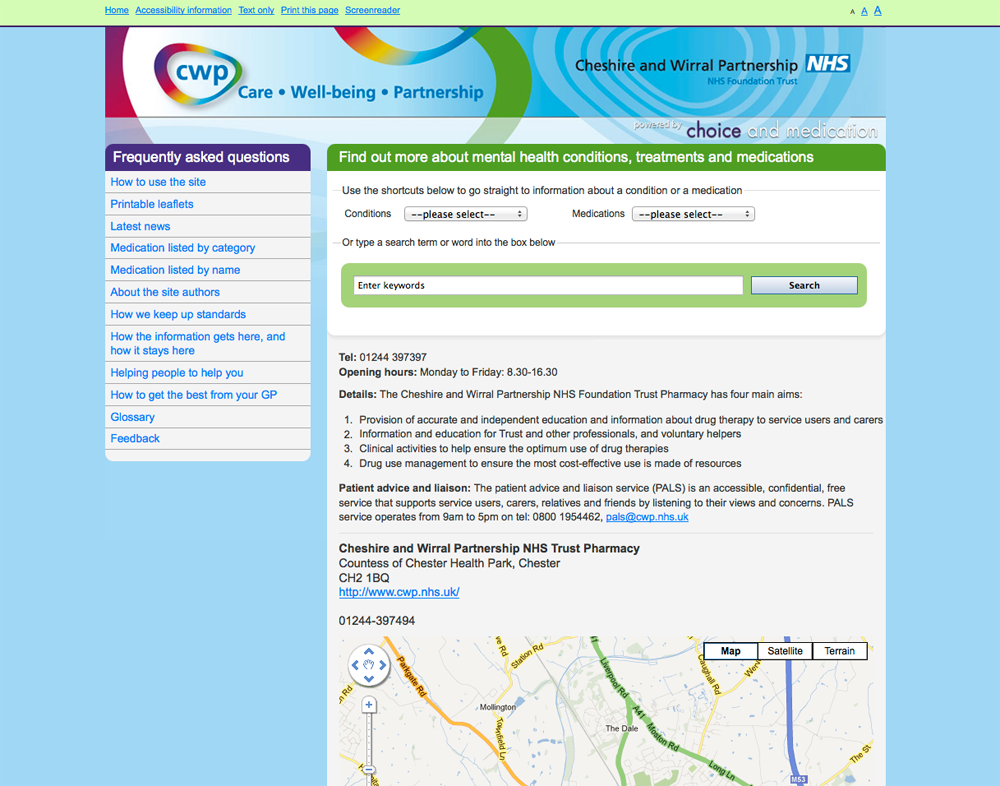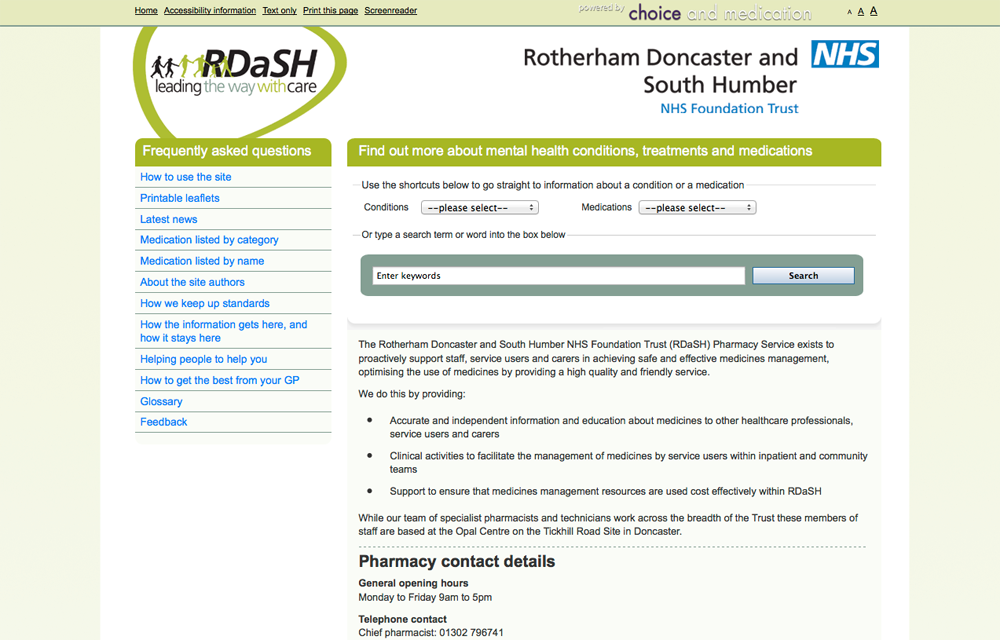Developing a suite of websites known as Choice and medication to support people who use mental health services, their families and carers, doctors, nurses and pharmacists to answer questions about prescribed psychiatric medication.
Rowan and the team helped us to translate our ideas into a product that our target audience really like.
Mick Collins, Project lead, Choice and medication project
Background to the work
A previous research project led by the National Institute for Mental Health in England identified the most common questions that professionals and people who use services have about precribed psychiatric medication.
The idea behind the website was to provide an engaging way for people to interact with these questions. These are intended as a starting point to inform discussions and choices about medication.
The site makes a genuine attempt to inform, educate and support. The information it provides is based on published data from well recognised information sources such as national professional bodies.
The website is the result of a multi-sector partnership project involving Norfolk and Waveney Mental Health NHS Foundation Trust, the United Kingdom Psychiatric Pharmacy Group (UKPPG) and the National Institute for Mental Health in England (NIMHE).
User informed design
We worked with web developers Ichameleon to develop the site. We have encouraged the adoption of a prototyping approach within the project to support better user informed design. The website has been made available for people to engage with it and test early on it’s development cycle.
To support this approach wehave developed a range of mechanisms to foster and gather user feedback to inform future development. This includes using open source wiki (Tiki-wiki) and survey (Limesurvey) platforms as well as taking advantage of Google applications and analytics tools.
By working in this way we are:
- making best use of freely available technologies to reduce costs
- supporting community engagement with the product early on in its lifecycle
- generating enthusiasm and excitement about the products future protential
- actively listening to what users say they want
- gathering detailed intelligence on visitor usage, and
- promoting increased confidence amongst project partners and sponsors.
Benefits
- Robust project management
- Good use of freely available software tools
- A solution driven by the people who use it
- Confidence and support from the project sponsors and partners


